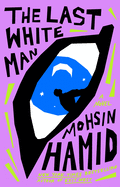
It happens to a lot of authors: sooner or later, they try Kafka on for size, as Mohsin Hamid has done (sort of) in The Last White Man. The opening is--it's impossible to avoid the word--Kafkaesque: "One morning Anders, a white man, woke up to find he had turned a deep and undeniable brown." Yet Anders, a trainer at an essentially all-white gym, isn't the only person in the unnamed town whose skin suddenly darkens. His transformation affects not only himself but also other white people in his life, including girlfriend Oona, a yoga instructor still processing her younger brother's drug-related death; Anders's father, "gaunt and ill," who--now that his son is a "dark man"--gives him cash and a rifle for protection; and Oona's mother, who complains that "our people" are changing, and is disturbed by the increase in "the dark faces on her street." As more of those faces darken, white militants try to run the transformed, including Anders, out of town.
Despite its Kafkaesque beginning, the novel, due to its depiction of town-wide transformations and subsequent social breakdown, bears a closer resemblance to Blindness, José Saramago's masterwork about a similar development. Hamid (Exit West; Discontent and Its Civilizations; How to Get Filthy Rich in Rising Asia) even uses the term "a kind of blindness," also noting that, "as with actual blindness," changes can lead to a new kind of seeing. The result is a frighteningly timely allegory about welcome forms of progress and the fears of people unable or unwilling to grow. --Michael Magras, freelance book reviewer

